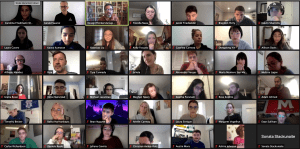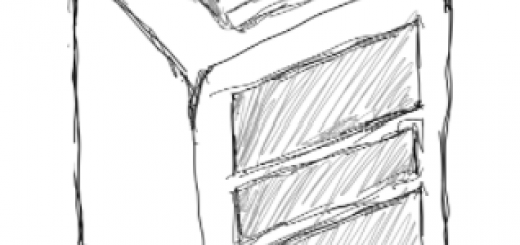#KeepGlobalSmith in BMGT468Z: Creating the Future through Systems Thinking and Design
This semester, I had the absolute pleasure to be a part of Professor Gerald Suarez’s global interactive online course, partnered with our international counterparts in Spain. Having been one of 31 students to be a part of this groundbreaking initiative engaging in global learning during COVID-19 is incredibly gratifying and impactful.
Prior to meeting Jorge Rodriguez and his students, Professor Suarez encouraged us to meet the moment, showcase our talents and abilities and take advantage of this phenomenal opportunity to work alongside students from differing backgrounds, locations and perspectives across the globe. He stressed that we are the ambassadors of UMD to our global partners and in the territory of pioneers, paving the way for future online global experiences. I was so excited to build relationships with my international team members and learn from them about the design-thinking process.
Below are some of my biggest takeaways from the course!
Blogging Questions:
Describe your experience in the Global Classroom. What was the best part of your experience? What surprised you about your experience?
- One of my favorite parts of the Global Classroom experience was engaging in weekly zoom calls with my international group members. I loved that we got to work together on our final group project and presentation for a real-life client. Each of their knowledge, background and experience was unique and different. New ideas were constantly brought to the table, making our brainstorming sessions even more profound. Through interactive hands-on activities, rapid prototyping projects and reflection sessions, we were able to develop a creative solution for Adventist Health Care. I was genuinely surprised at how involved everyone was throughout this process. Despite different time zones, classes and extracurricular activities, we all found time to meet and become fully invested in our project.
What challenges did you face when interacting and integrating global students in your team and what did you learn from that experience?
- The two hardest challenges I faced when interacting with our global friends were the time difference and language barriers. Communication is crucial and is most definitely a common challenge when working with international companies. Oftentimes, we forgot that Spain was 6 hours ahead of us when planning our group meetings; therefore, finding a time that fit all of our schedules was difficult. Similarly, communicating via zoom was also hard due to the technicality of things and not being able to meet in person. Nonetheless, bridging communication gaps and improving global communication, especially via zoom, is a great start to overcoming these barriers and stimulating team innovation and creativity.
What was something that you learned from your participation in this course that you may not have learned otherwise?
- Unlike a course taken with all students at UMD, this class enabled me to embrace the opportunities and challenges of the world today by interacting with and learning from my friends in Spain. We were given the opportunity to build a deeper cultural understanding of their lives as well as integrate them into ours. They pushed us to explore new innovative ideas, step outside our comfort zones and personally relate to the problem and solution. I not only learned from them, but I also learned about myself throughout this process.
What has this experience taught you about collaborating with global partners in a virtual environment and designing a solution for a real-life client?
- First of all, I learned that designing a solution for a real-life client is not easy. There is a lot of trial-and-error that comes with brainstorming and creating implications. Idealization can and must be refined, and value creation is based on the discovery of your teams’ nuggets of insight. In addition, empathy and the intangibles (human connectedness) are crucial in the design-thinking process. Through this collaboration with global partners in a virtual environment, I realized the importance of leveraging the power of empathy and listening attentively to your peers. Clearly, talking through your camera lens is not ideal, but using your empathic communication skills can help you connect to the subject matter and real-world situations.
What advice would you give a student considering participating in this type of course?
- I highly recommend stepping outside of your comfort zone and taking this extraordinary course. Any major, whether business, engineering, biology or communications, can take away so many lessons from this course. Even if you are not a creative person, this course will shape you to be confident in your imaginative and visionary capabilities. As Professor Suarez said, “Design-thinking is a pursuit of radical empathy that continues to be a moving target.” You are constantly growing and learning throughout this process, so take a leap of faith and immerse yourself in these design activities you can take into your future career.
A special THANK YOU to Professor Suarez for coordinating this collaborative experience and inspiring us all to shape the future!




